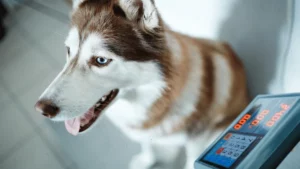Does Your Dog Have Rabies? A Guide to Symptoms and Prevention
Rabies is a deadly viral disease that can affect both humans and animals. While it’s a serious condition, early detection and prevention can make a significant difference. If you suspect your dog might have rabies, it’s crucial to act quickly and seek veterinary advice.
Understanding Rabies
Rabies is transmitted through the saliva of an infected animal, typically through a bite. It can also be transmitted through scratches or mucous membranes if the animal’s saliva comes into contact with them. Once symptoms appear, the disease progresses rapidly and is often fatal.
Signs of Rabies in Dogs
Identifying the early signs of rabies in your dog can be crucial. While symptoms can vary, some common indicators include:
- Behavioral changes: Excessive barking, aggression, restlessness, or unusual affection.
- Physical symptoms: Drooling, difficulty swallowing, seizures, and paralysis.
- Hydrophobia: Fear of water.
Preventing Rabies
The most effective way to protect your dog from rabies is through vaccination. Regular vaccinations can help prevent your dog from contracting the disease. Additionally, it’s important to keep your dog away from stray or wild animals, as they may be carriers of the rabies virus.
What to Do If You Suspect Rabies
If you believe your dog may have been exposed to rabies, it’s essential to take immediate action. Here’s what you should do:
- Contact your veterinarian: Provide them with a detailed history of your dog’s exposure and any symptoms you’ve observed.
- Quarantine your dog: Keep your dog isolated from other animals and humans until advised by your veterinarian.
- Seek medical attention: If you or anyone else has been bitten by your dog, seek immediate medical attention.
Remember: Rabies is a serious disease, and early diagnosis and treatment are crucial. Don’t hesitate to seek veterinary advice if you have any concerns about your dog’s health.














